Commercial interior design has become a captivating concept that not only fascinates visitors but also appeals to customers. It is remarkable how this trend can be applied to any company and significantly impact how people feel about working there. The importance of chic commercial interior design cannot be overstated.
When implementing this trend, it is crucial to do it tastefully, with elegance and sophistication in mind. It is not about being flashy or over the top. In this article, we will explore the key elements of chic commercial interior design that are sure to impress.
Creating a Good Space
The first step in incorporating this trend into your company is to have a good space. Natural light is a vital aspect to consider. Once you have secured a space with natural light, you can proceed to create a checklist of elements you want to include in your commercial design. You can hire a professional interior designer or firm to handle the intricate details, such as clean lines, color schemes, and different textures.
A beautiful and chic commercial interior design should reflect a sophisticated aura while providing functionality and aesthetics to both employees and visitors.
1. Open-Concept Workspaces
Open-concept offices have gained popularity due to their ability to create a more comfortable working environment and foster collaboration. By designating shared spaces and using movable partitions, companies can create workspaces that cater to all types of employees.
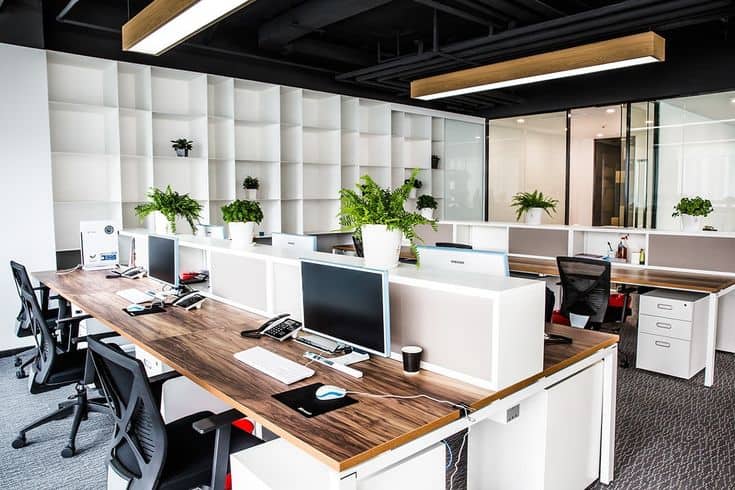 Image Credits: pinterest.com
Image Credits: pinterest.com
Open-concept offices offer several benefits, including improved worker morale, increased work satisfaction, flexibility, and opportunities for creativity. They are also often considered more cost-effective than traditional offices.
2. Sound Absorption Solutions
Sound absorption solutions are crucial in commercial interior design to diminish noise and create a more peaceful environment. Strategically positioning absorbers and diffusers reduces reverberation, resulting in better productivity and focus.
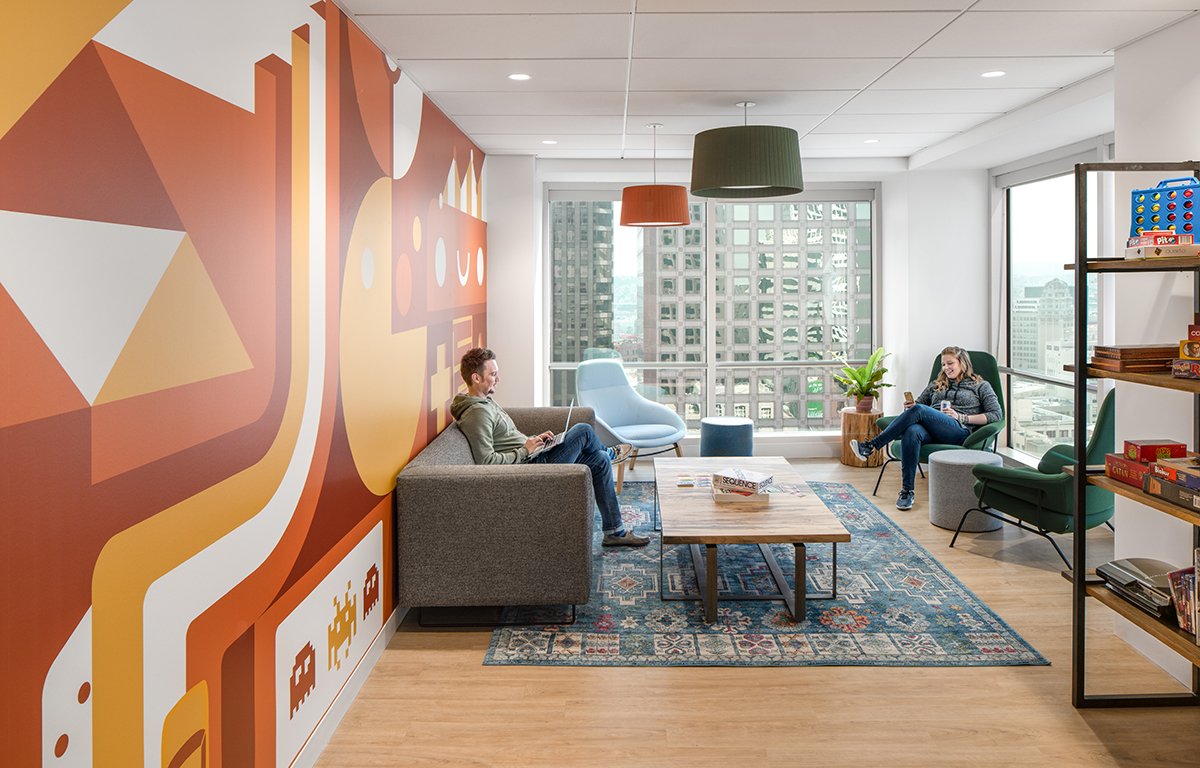 Image Credits: medium.com
Image Credits: medium.com
Popular sound absorption solutions include acoustic plaster, tiles, and soundproof flooring. By reducing noise, these solutions help keep employees calm and focused, leading to increased productivity.
3. Color & Pattern
Color and pattern play integral roles in commercial design. Choosing the right color palette for retail spaces adds visual interest and creates a sense of coherence among employees. Color also enhances employee experience, creates a relaxed atmosphere, and injects personality into the professional space.
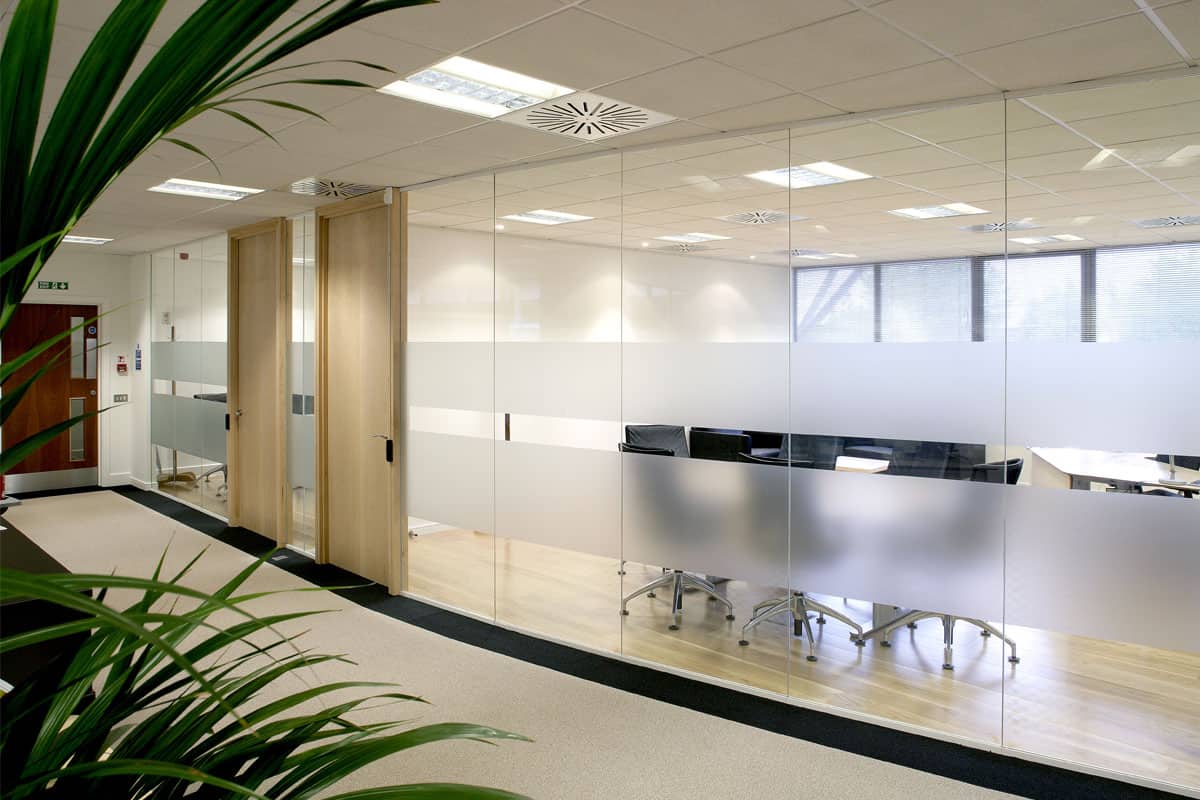 Image source: parterreflooring.com
Image source: parterreflooring.com
Incorporating color and patterns into your design can add personality while maintaining a clean and modern aesthetic, which is especially important with the growing trend towards minimalism.
4. Glass Walls and Creative Dividers
Glass walls and creative dividers are transforming office spaces by improving communication, collaboration, and teamwork. They allow natural light to flood the commercial space, provide visibility into employees' work, and create a more open and engaging environment.
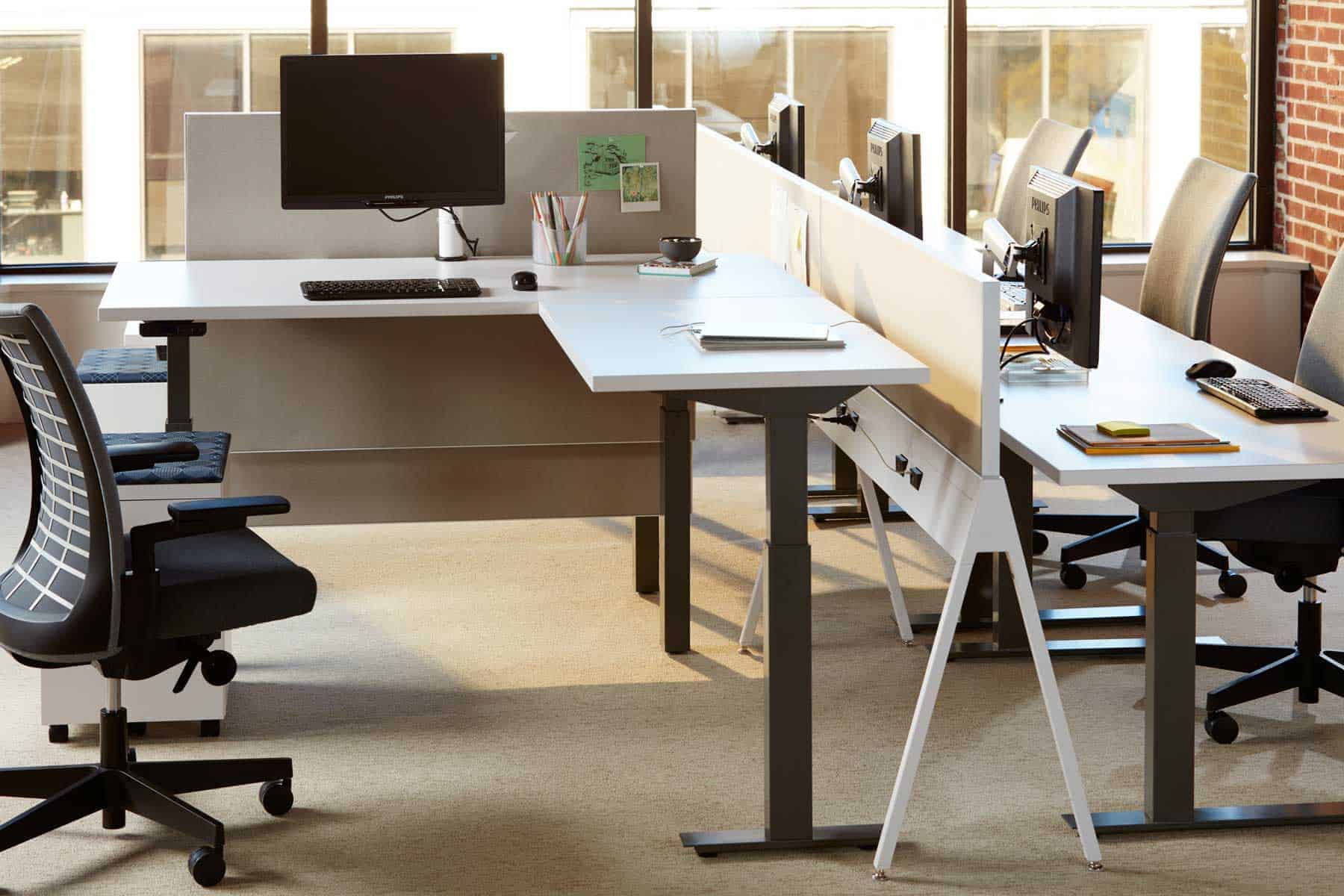 Image Credits: avantisystemsusa.com
Image Credits: avantisystemsusa.com
In addition to promoting transparency and reducing stress, glass walls and creative dividers encourage creativity and innovation. Employees can share ideas and witness the progress of their projects from start to finish, thus increasing engagement and motivation.
5. Ergonomic Furniture
Consider incorporating ergonomic furniture into your commercial interior design to promote good posture, reduce fatigue, and increase productivity. Ergonomic furniture is designed to facilitate mental and physical activity while minimizing strain on the body.
 Image Credits: sysfurniture.com
Image Credits: sysfurniture.com
The benefits of using ergonomic furniture include reduced stress levels, increased productivity, and improved morale. By prioritizing ergonomics, businesses can create a comfortable and healthy work environment for their employees.
6. Biophilic Design
Biophilic design aims to mimic and reflect the natural world in commercial spaces. By incorporating elements such as green walls, potted plants, natural light, and wooden beams, biophilic design creates a more appealing, calming, and enjoyable work environment.
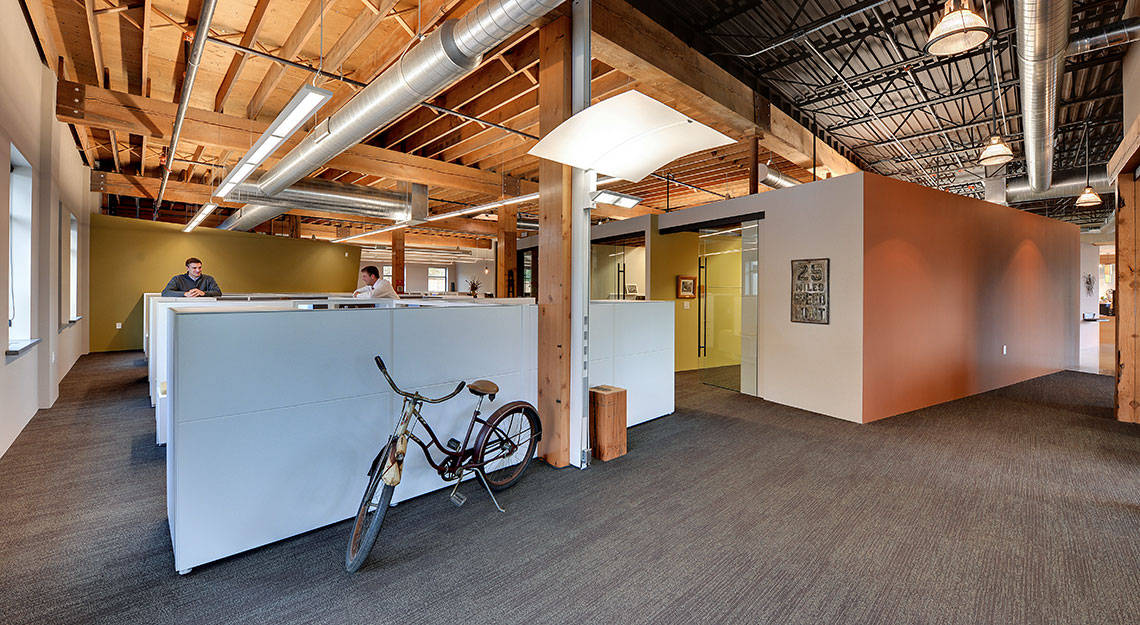 Image Credits: biofilico.com
Image Credits: biofilico.com
Biophilic design also fosters workplace flexibility, allowing employees to adapt to changing work schedules and finish their tasks more effectively. It brings the beauty of nature into the workspace, making it feel like a biodome and enhancing productivity.
7. Multipurpose Spaces
Multipurpose spaces offer flexibility and efficiency in commercial interior design. These spaces can be used for meetings, training, collaboration, or sharing ideas. They are easier to manage and less cluttered than individual offices, allowing employees to work together more efficiently.
 Image Credits: planforcegroup.com
Image Credits: planforcegroup.com
Multipurpose spaces redefine the need for separate rooms and better serve the versatile needs of management and employees. They enhance productivity and efficiency by providing adaptable spaces for various purposes.
Frequently Asked Questions (FAQs) on Commercial Interior Design
1. What Are the Types of Commercial Interior Design? Commercial interior design varies depending on the specific space. Types of commercial interior design include residential, office renovation, retail, medical, and industrial design.
2. What Are the Functions of Commercial Interior Designers? Commercial interior designers merge a business's physical space with the employees' objectives. They create draft drawings, choose color palettes and furnishings, and ensure the project fits within the client's budget.
3. What Skills Do You Need to Be a Commercial Interior Designer? Commercial interior designers should have a bachelor's degree in interior design, completed an apprenticeship, and possess organizational, management, and creative skills.
4. What Are the Advantages of Commercial Interior Design? Commercial interior design ensures optimal features, meets code requirements, saves time, and enhances client trust in the brand.
5. Why Hire a Commercial Interior Designer? A commercial interior designer acts as a project manager, ensuring the space is work-friendly, eco-friendly, and profitable. They consider elements such as natural light, color schemes, and patterns that ultimately reflect the intended brand message.
Final Recommendations on Commercial Interior Design
Implementing chic commercial interior design can be a daunting task, especially without prior knowledge of the style or industry. However, by incorporating these seven key elements into your design, you can give your business an edge and show employees that you take both commercial interior design and their work seriously. From ergonomic furniture to multipurpose spaces, these trends will elevate your commercial space to new heights.

















